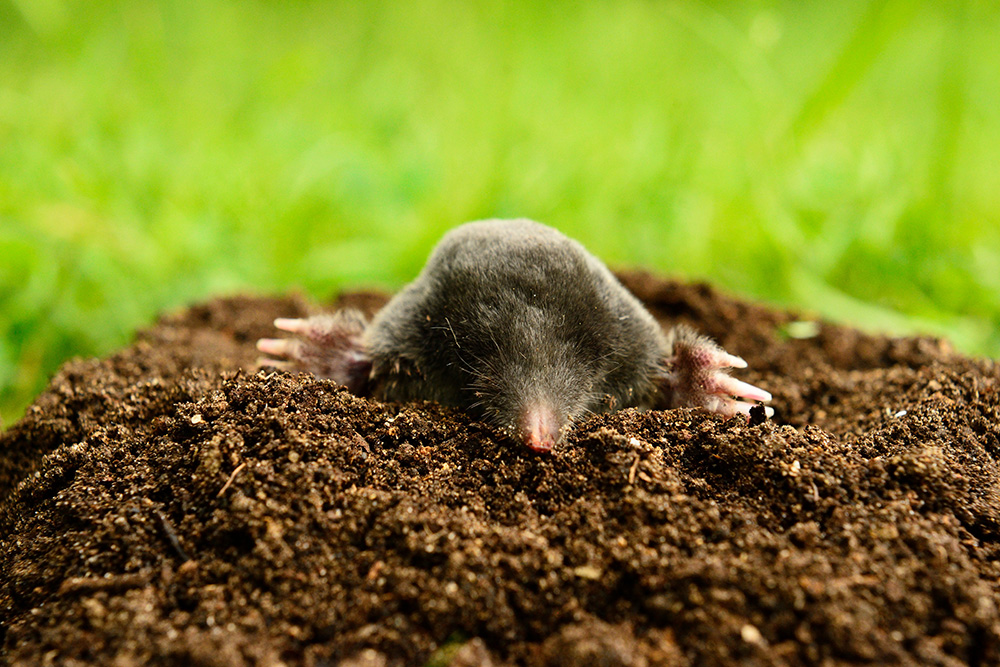Moles on the move: Traps are most effective control method

K-State expert offers advice on protecting home lawn
Considering they spend most of their time underground, it may seem surprising the damage that moles do above ground.
As they forage for food, moles are known to make travel lanes that cause meandering paths of upheaved soil in home lawns and farmsteads. Moles do not feed on plant matter, but they can still cause damage by disturbing roots and uprooting small plants.
Some tunnels may be abandoned soon after they’re built, while others are used for a period of time.
Kansas State University wildlife expert Drew Ricketts said homeowners have come up with many remedies – chewing gum, noisemakers, broken glass, bleach, windmills and human hair among them – but none have provided consistent or reliable control.
“Poison baits also fail to work because moles feed on earthworms and grubs, not vegetable matter,” Ricketts said. “Even grub control products are ineffective because they do not control earthworms,” which are an important food source for moles.
Grim as it may sound, traps are the best control method for moles, according to Ricketts.
“There are three types of traps: harpoon, choker and scissor-jawed,” he said. “Each can be effective but may take some time to master.”
He offered the following advice:
- Because moles use some tunnels more than others, use a broomstick or similar item to create test holes in a number of runs. Check a day later to see which runs have been repaired. These are the active runs.
- Place a trap in an active run. When runs are shallow and have less than an inch soil between the top of the run and soil surface, scissor and harpoon style traps may be placed into the run from above without excavating the run.
Center the trap over the run so that the jaws of a scissor trap are straddling the run or the prongs of a harpoon trap are centered over the run.
Use a masonry trowel or other flat blade to create an obstruction-free path for harpoons or trap jaws to freely pass through.
Create an obstruction in the run by depressing the loose soil in the top of the run where the trap trigger will be located.
While holding up on the back of the trigger of a scissor trap or the dog of a harpoon trap, press the trap down into the run so that the trigger mechanism is resting on the obstruction in the top of the run. - When runs are deeper than one inch in the soil profile, or when using choker-style traps, begin by excavating soil, then place the trap in the run. Choker traps are directional, so two traps will be needed; one trap will be placed in each section of the run leading away from the opening that you created.
Choker traps should be staked, so that captured moles cannot escape with the trap. Replace loose soil.
When placing scissor or harpoon mole traps in deep runs, an obstruction should be made by packing soil in the center of the run below the trigger. Place the trap in the run with the triggering mechanism centered, and replace loose soil so that moles are not scared away by the opening you have created in the run.
Ricketts suggests moving the traps if no moles are caught within three days.
An instructional video on identifying mole damage, active runs, and placing mole traps can be found online at https://youtu.be/VjclIp2li1s
Ricketts and his colleagues in K-State’s Department of Horticulture and Natural Resources produce a weekly Horticulture Newsletter with tips for maintaining home landscapes and gardens.
Interested persons can subscribe to the newsletter, as well as send their garden and yard-related questions to [email protected], or contact your local K-State Research and Extension office.



